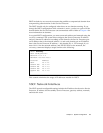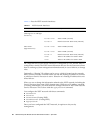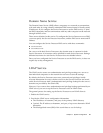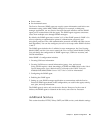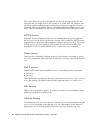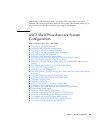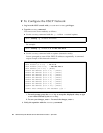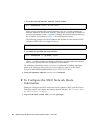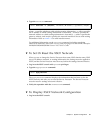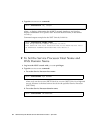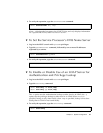
Chapter 3 System Configuration 27
abnormality in the air temperature, such as the CPU temperature, can still be
detected. The server temperature limits are set to protect the domain hardware, so
this command is logically used before powering on any domain.
XSCF Shell Procedures for System
Configuration
This section describes these procedures:
■ To Configure the DSCP Network
■ To Display DSCP Network Configuration
■ To Configure the XSCF Network Interfaces
■ To Configure the XSCF Network Route Information
■ To Set Or Reset the XSCF Network
■ To Display XSCF Network Configuration
■ To Set the Service Processor Host Name and DNS Domain Name
■ To Set the Service Processor’s DNS Name Server
■ To Enable or Disable Use of an LDAP Server for Authentication and Privilege
Lookup
■ To Configure the Service Processor as an LDAP Client
■ To Set the NTP Configuration
■ To Display the NTP Configuration
■ To Set the Timezone, Daylight Saving Time, Date, and Time Locally on the Service
Processor
■ To Create a USM User Known to the SNMP Agent
■ To Display USM Information for the SNMP Agent
■ To Create a VACM Group
■ To Create a VACM View
■ To Give a VACM Group Access to a VACM View
■ To Display VACM Information for the SNMP Agent
■ To Configure the SNMP Agent to Send Version 3 Traps to Hosts
■ To Enable the SNMP Agent
■ To Display SNMP Agent Configuration
■ To Enable or Disable the Service Processor HTTPS Service
■ To Enable or Disable the Service Processor Telnet Service
■ To Configure the Service Processor SMTP Service
■ To Enable or Disable the Service Processor SSH Service
■ To Generate a Host Public Key for SSH Service



